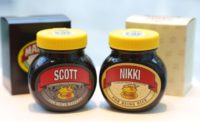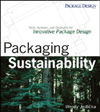For those who celebrate Christmas, it’s a time for giving and family celebrations. Yet, it can also be a time of excess and over-indulgence — from gifting, to greeting cards and glitter — we question if the glamor is worth the garbage.
Figures show that this festive season generates 30% more waste than any other time of the year, according to waste management company Biffa. Each year the UK spends a combined total of around £700m on unwanted presents, with 227,000 miles of wrapping paper thrown away (PHS Wastekit, 2019).
Sustainability has become a topic that no one can or should ignore — but it has been a subject that has been largely ignored when it comes to the impact of this Christmas spike. From a packaging perspective, there has long been a drive to design and introduce materials and structures that are kinder to our planet during the festive season.
One question that remains unclear is exactly who owns this particular agenda item? Of course, the correct answer is that brand owners, retailers, governments and consumers have a collective responsibility to protect our planet. And we can see changes on all fronts.
Consumer packaged goods (CPG) companies create and refine their 2025 sustainability pledges. Retailers draw up preferred materials guidelines. New generations of consumers have higher-than-ever expectations with regard to the sustainability of the packaging that protects the goods they buy. Governments look to update the legislative framework and provide more funding to support waste and recycling initiatives.
Few would dispute that any of these efforts are well-intentioned, but there are many who would argue that none of these groups are doing enough and that the overall approach needs to be more cohesive.
The following are four sub-themes related to the sustainable packaging conversation that highlight the importance of partnerships in order to succeed.
Say It (Or Do It) Like You Mean It
For far too long, the approach to sustainability from many companies has smacked of tokenism, rather than a genuine effort to bring about meaningful change. For some big packaging producers, historically this has taken the form of treating environmental programs as box-ticking exercises, or they’ve been guilty of “greenwashing” — exaggerating or misrepresenting the environmental benefits of an organization’s products or practices.
More well-informed consumers are increasingly attuned to these misleading approaches, and the negative publicity can be damaging. Sustainable packaging programs are no longer just a “nice to have” — it’s time to get real.
We’ve started to see this corporate transition, with supermarkets paving the way toward more sustainable practices. This year in the UK, Morrisons, Waitrose and John Lewis all announced their commitment to ban glitter (which can take hundreds of years to biodegrade) from their own-brand Christmas products.
Fact Over Fiction
While we acknowledge that sustainability is being talked about more widely than ever before, it doesn’t necessarily follow that there is more clarity on exactly what we need to do.
As Christmas comes closer, the debate heats up on whether to buy a real or artificial tree, or more recently whether to get one at all. Yet, there’s still a lot of confusion around which is better for the environment.
It’s easy to believe that artificial trees are more environmentally friendly since they don’t contribute to deforestation. However, these trees are typically made up of PVC which can take hundreds of years to break down. According to the Carbon Trust, artificial trees must be reused 10 times to have the equivalent carbon footprint of a real tree.
Nevertheless, the discussion around PVC and plastics in itself shouldn’t be looked at in isolation. There are many materials, such as aluminum foil and glass-made glitter, that also do harm to the environment during the festive celebrations. In the same way we must work in partnership with stakeholders across the board, we also must include a diversity of materials in the critique toward more sustainable packaging.
While no one refutes that certain plastics need to be removed from the supply chain, in many cases plastic will provide a packaging solution with an overall environmental impact that is less damaging to the planet than other materials. This oversimplified binary view of packaging materials regards alternatives, such as aluminium and glass, as universally good, which, when considering the overall environmental impact, is not always the case. The underlying message is that as both producers and consumers we need to be better informed.
To Fix It, You Might Have to Break It
Closely linked to practices like greenwashing is the idea that we might make incremental changes that will bring about an end to the global environmental crisis. This view is starting to sound outdated, and we will need to think far more radically in order to bring about meaningful change.
There needs to be a more disruptive approach. In packaging terms, this means going beyond just trying to recycle our way out of the problem. We need to think about new models that not only recycle packaging more efficiently, reduce material usage and reuse packaging but potentially eliminate the need for traditional packaging formats altogether.
Primark has innovatively created Christmas bags that double up as wrapping paper. Similarly, companies such as Love A Christmas Tree, Rental Christmas Tree and London Christmas Tree allow sustainable-savvy consumers to rent a Christmas tree, which then gets returned to the Christmas company for another year.
The rental Christmas Tree model offers a click-and-collect delivery service which further aids the elimination of the plastic netted packaging and road miles.
Tomorrow People
Renting Christmas trees represents a different type of business model whereby consumers and companies work in tandem to adapt from traditional Christmas habits. It is possible, with the right knowledge, partnerships and genuine desire to do good — we can transition toward a more sustainable festive future.
Ultimately, this is an education piece; whereby the future of sustainable supply chain models rely on keenly proactive and environmentally educated consumers. This paradigm has tapped into the market of families and smaller children — partnering with schools to provide a platform to cultivate the next generation of world-changers in this sector.
Yet there is always more to do. Whilst the UK Christmas tree rental market is growing 30% year-by-year, the trend has largely been concentrated in London. With the sharing of knowledge and transitioning of mindsets, there is huge potential to monopolize this thinking both nationally, inter-generationally and more widely across supply chain stakeholders.
This is just one example, but it’s application across industries is infinite. Supply chain stakeholders must adopt the same perspectives to think into the heads of generations of consumers who will buy differently. Early and consistent engagement with these growing demographics is imperative to champion a sustainable tomorrow.
So, How Can It Be Done?
There is no doubt we are stronger together. It will be almost impossible to step-up sustainability efforts to the levels they are needed if all parties don’t work in partnership.
Players across the packaging value chain, from design (strategic and structural) through to packaging producers and waste disposal specialists, must collaborate with each other, and the conversation needs to engage more key groups as well.
Retailers, consumers and lawmakers all have a vital part to play if we are to make truly transformational changes in packaging sustainability that will have a lasting positive impact on our planet.
With this said, if all stakeholders work together in future festive seasons, the possibility of a Green Christmas may no longer be an idealized dream.




